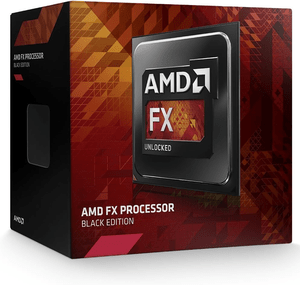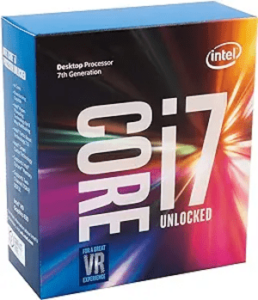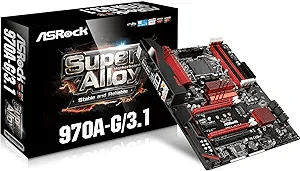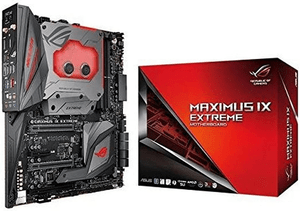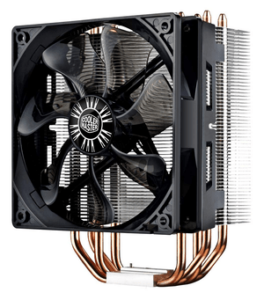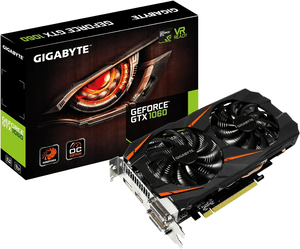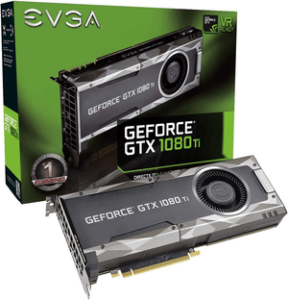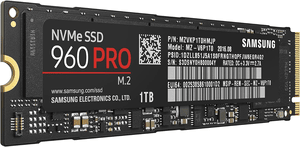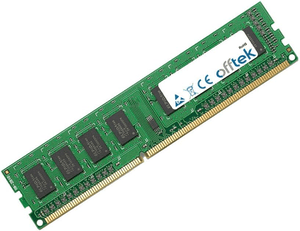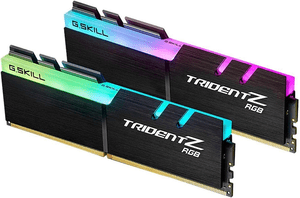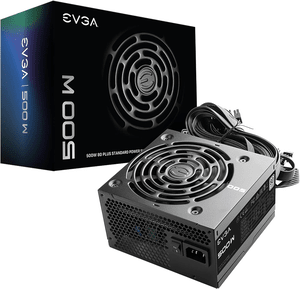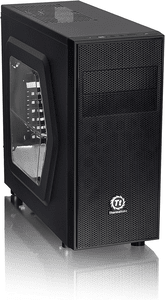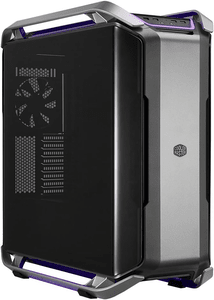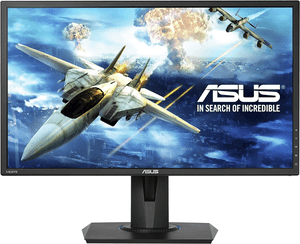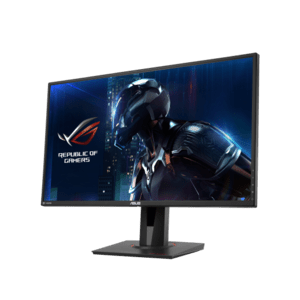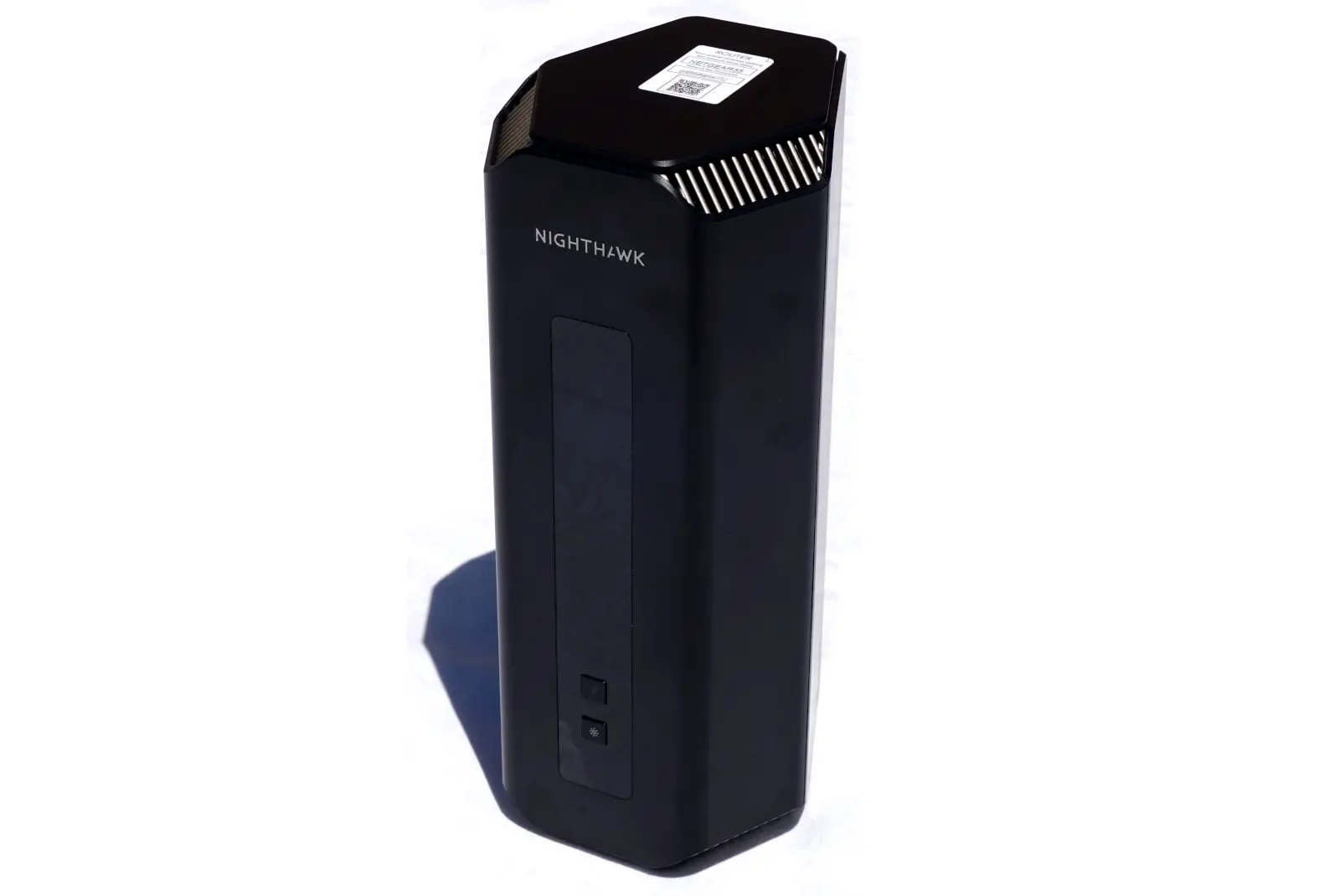How to Build an Epic Gaming PC
Nov 30, 2018 | Share
Equipment Guides, Gaming
Anyone can find a good prepackaged gaming computer, but you’re not just anybody. You’re you, and you want to create your own personalized PC. We can help with that. We’ll cover the specs to look for and which parts you should spend the most money on. And then we’ll top it all off with how to put it together.
If that sounds too complicated, start with our recommended quick-build kits. These are good for gamers on their first venture into the build-your-own-computer world. But for PC gamers ready to get their hands dirty, keep reading for the knowledge you need to create your machine.
Quick-Build Gaming PC Kits
Budget Kit (~$1,000)
| Component | Model | Price* | Order Now | |
|---|---|---|---|---|
| Processor | AMD FX-8350 (Cooling Unit Included) | $81.00 | View on Amazon | |
| Motherboard | ASRock 970A-G/3.1 | $130.00 | View on Amazon | |
| Graphics Card | Gigabyte GeForce GTX 1060 | $190.00 | View on Amazon | |
| SSD | Samsung NVMe SSD 960 EVO M.2 (250 GB) | $109.00 | View on Amazon | |
| RAM | 8GB RAM Memory Upgrade from OFFTEK | $69.00 | View on Amazon | |
| Power Supply | EVGA 500 W1 | $40.00 | View on Amazon | |
| Case | Thermaltake Versa H24 Window SPCC ATX Mid Tower | $30.00 | View on Amazon | |
| Subtotal | (Internal Hardware and Case Only) | $679.00 | ||
| Add Operating System (OS) and Monitor | ||||
| OS | Windows 10, 64 bit (Download from Microsoft) | $139.00 | View on Microsoft | |
| Monitor | ASUS 24-inch Full HD FreeSync | $182.00 | View on Amazon | |
| Grand Total | $1,000.00 |
| Component | Processor |
| Model | AMD FX-8350 (Cooling Unit Included) |
| Price* | $81.00 |
| Order Now | View on Amazon |
| Component | Motherboard |
| Model | ASRock 970A-G/3.1 |
| Price* | $130.00 |
| Order Now | View on Amazon |
| Component | Graphics Card |
| Model | Gigabyte GeForce GTX 1060 |
| Price* | $190.00 |
| Order Now | View on Amazon |
| Component | SSD |
| Model | Samsung NVMe SSD 960 EVO M.2 (250 GB) |
| Price* | $109.00 |
| Order Now | View on Amazon |
| Component | RAM |
| Model | 8GB RAM Memory Upgrade from OFFTEK |
| Price* | $69.00 |
| Order Now | View on Amazon |
| Component | Power Supply |
| Model | EVGA 500 W1 |
| Price* | $40.00 |
| Order Now | View on Amazon |
| Component | Case |
| Model | Thermaltake Versa H24 Window SPCC ATX Mid Tower |
| Price* | $30.00 |
| Order Now | View on Amazon |
| Component | Subtotal |
| Model | (Internal Hardware and Case Only) |
| Price* | $679.00 |
| Order Now | |
| Component | |
| Model | Add Operating System (OS) and Monitor |
| Price* | |
| Order Now | |
| Component | OS |
| Model | Windows 10, 64 bit (Download from Microsoft) |
| Price* | $139.00 |
| Order Now | View on Microsoft |
| Component | Monitor |
| Model | ASUS 24-inch Full HD FreeSync |
| Price* | $182.00 |
| Order Now | View on Amazon |
| Component | Grand Total |
| Model | |
| Price* | $1,000.00 |
| Order Now | |
*Prices are current as of 11/30/18 and subject to change.
Badass Kit (~$3,596)
| Component | Model | Price* | Order Now | |
|---|---|---|---|---|
| Processor | Intel Core i7-7700K | $355.00 | View on Amazon | |
| Motherboard | ASUS ROG Maximus IX Extreme | $300.00 | View on Amazon | |
| CPU Cooler | Cooler Master Hyper 212 Evo | $30.00 | View on Amazon | |
| Graphics Card | EVGA GeForce GTX 1080 Ti | $1,000.00 | View on Amazon | |
| SSD | Samsung NVMe 960 PRO M.2 (1 TB) | $379.00 | View on Amazon | |
| RAM | G.SKILL TridentZ RGB 16GB (2 x 8GB) | $175.00 | View on Amazon | |
| Power Supply | CORSAIR RM1000x | $150.00 | View on Amazon | |
| Case | Cooler Master Cosmos C700P E-ATX Full-Tower | $380.00 | View on Amazon | |
| Subtotal | Internal Hardware and Case Only | $2,769.00 | ||
| Add Operating System (OS) and Monitor | ||||
| OS | Windows 10, 64 bit (Download from Microsoft) | $139.00 | View on Microsoft | |
| Monitor | ASUS ROG Swift PG279Q 165Hz G-SYNC | $688.00 | View on Amazon | |
| Grand Total | $3,596.00 | |||
| Component | Processor |
| Model | Intel Core i7-7700K |
| Price* | $355.00 |
| Order Now | View on Amazon |
| Component | Motherboard |
| Model | ASUS ROG Maximus IX Extreme |
| Price* | $300.00 |
| Order Now | View on Amazon |
| Component | CPU Cooler |
| Model | Cooler Master Hyper 212 Evo |
| Price* | $30.00 |
| Order Now | View on Amazon |
| Component | Graphics Card |
| Model | EVGA GeForce GTX 1080 Ti |
| Price* | $1,000.00 |
| Order Now | View on Amazon |
| Component | SSD |
| Model | Samsung NVMe 960 PRO M.2 (1 TB) |
| Price* | $379.00 |
| Order Now | View on Amazon |
| Component | RAM |
| Model | G.SKILL TridentZ RGB 16GB (2 x 8GB) |
| Price* | $175.00 |
| Order Now | View on Amazon |
| Component | Power Supply |
| Model | CORSAIR RM1000x |
| Price* | $150.00 |
| Order Now | View on Amazon |
| Component | Case |
| Model | Cooler Master Cosmos C700P E-ATX Full-Tower |
| Price* | $380.00 |
| Order Now | View on Amazon |
| Component | Subtotal |
| Model | Internal Hardware and Case Only |
| Price* | $2,769.00 |
| Order Now | |
| Component | |
| Model | Add Operating System (OS) and Monitor |
| Price* | |
| Order Now | |
| Component | OS |
| Model | Windows 10, 64 bit (Download from Microsoft) |
| Price* | $139.00 |
| Order Now | View on Microsoft |
| Component | Monitor |
| Model | ASUS ROG Swift PG279Q 165Hz G-SYNC |
| Price* | $688.00 |
| Order Now | View on Amazon |
| Component | Grand Total |
| Model | |
| Price* | $3,596.00 |
| Order Now | |
| Component | |
| Model | |
| Price* | |
| Order Now | |
*Prices are current as of 11/30/18 and subject to change.
These build kits are recommendations based on our research. If you have issues with any of these components, please let us know in the comments.
How to Custom Build Your Gaming PC
Components
There are several parts to consider when building your battle station. While some are more important than others, they all play a crucial role in your gaming experience, so we’ll look at them individually.
Processor (CPU)
Your processor is the chip that makes your computer work. It will have a significant impact on how fast your games can run. Processors come with different numbers of cores and in many speeds and configurations.
The relationship between the number of cores and how fast a processor works gets super complex, but basically you want more cores for more speed.
You want a processor speed of at least 3.0 GHz, but get the fastest one you can get that still fits your budget. (Processors can get expensive.) Just make sure the motherboard you want and the processor you choose will play nicely together. As you’ll see, compatibility is the number-one concern when selecting the parts for your custom computer.
Motherboard
Your motherboard is the hub of all your other components, so make sure everything you choose is compatible with it. The number, type, and configuration of the card slots and ports on your motherboard will not only determine what you can add to your computer now but also with any upgrades going forward.
While your motherboard affects your whole computer, it won’t affect your gaming experience as much as other components, like your processor or graphics card. We suggest choosing the processor you want first, then selecting a motherboard with a pin configuration that matches that processor.
Along with fitting your processor, make sure you choose a motherboard with a card slot for upgrading your graphics card (GPU). Most motherboards come with a GPU, but your GPU is usually the component that has the biggest effect on your gaming experience, so you definitely want the ability to upgrade it as better technology becomes available. You also want to make sure your motherboard has a couple of slots for upgrading RAM.
Cooling Unit
Your cooling unit is the fan and heat sink for your processor. Some CPUs come with a cooling unit, and others are sold separately. If you choose a processor without an included cooling unit, make sure the cooling unit you buy is compatible with your processor.
Graphics Card (GPU)
Next, you want to choose a good graphics processing unit (GPU). This is also called a graphics card or video card. The GPU is an additional processor dedicated specifically to video processing.
Your GPU will likely affect your gaming experience more than any other individual component, especially if you like high-resolution and cinematic games, like Crysis or The Witcher 3: The Wild Hunt.
Some motherboards come with graphics processing capabilities, but we strongly recommend getting a dedicated graphics card. Games already push the limits of standard graphics processing, and with virtual reality (VR) gaining more traction, your machine will need all the power it can get.
Choose a GPU that’s compatible with your motherboard and has at least a 1,200 MHz (1.2 GHz) clock, or faster if you can afford it. This is the place to splurge.
Graphics cards with higher VRAM can also help reduce buffering and maintain a smooth gaming experience, so get a GPU with 3 GB or more of VRAM. (VRAM is video random access memory. It’s sometimes called video memory or video buffering and is usually measured in GB.)
Solid State Drive (SSD)
Solid state drives have replaced traditional hard drives in high-end gaming computers. While conventional hard drives are much less expensive per byte of storage, solid state drives are smaller, faster, quieter, more durable, and more energy efficient. Speed and efficiency are key to high-performance gaming, and the smaller size leaves you more room for other upgrades.
Choose an SSD with fast read and write speeds because slower reading and writing can cause games to lag. Both the SSDs we recommend have max read speeds over 3,000 MB/sec and max write speeds over 1,800 MB/sec. Also, get as many GB as you can on your SSD, but don’t splurge on this component. More storage lets you download more games, but the most important part about a solid state drive is its read and write speeds.
We’ve said it once, and we’ll say it again: make sure the SSD you choose is compatible with your motherboard.
Random Access Memory (RAM)
Plenty of RAM keeps your system running efficiently. This not only makes for a better gaming experience, but it also keeps your machine running cooler, which will help it last longer.
Get 4–16 GB of extra RAM if you can. RAM is fairly inexpensive, so this is not an area to cut back on. However, other components can affect your games more substantially, so you don’t need to blow out the budget here. Do make sure it’s compatible with your motherboard though.
Power Supply
When choosing a power supply, first make sure it will provide enough power. You can figure out how much power you need by adding up all the wattage needs for your other components.
You want to err on the high side. Running your power supply at 100% capacity can wear it out quickly, so we suggest getting 40–60% more than the total watts required by the rest of your gear. This will leave plenty of overhead and room to add or upgrade parts without upgrading your entire power supply.
Make sure the power supply you choose has enough of the connectors you need. Different computer components require different connection types based on the number of pins. Your power supply needs to plug into all the different pin configurations for each of your components.
Some power supplies are fully modular, which means the cables detach at both ends. This feature improves compatibility by allowing for customization of some output configurations. In layman’s terms, fully modular power supplies give you more options, so they work with more components.
Computer Case
When it comes to your computer case, bigger is usually better. Not only will a larger case give you more room for upgrades and expansion, but (provided it’s properly ventilated) it will also dissipate the heat your processor generates.
Noise is another thing to consider. Big, empty, metal spaces—like the inside of a computer case—can easily become resonance chambers. While this won’t affect your computer’s performance, a loud computer may distract from your gaming.
We recommend looking for live or online demos of computers using the cases you’re considering to get an idea of how loudly they run.
Operating System (OS)
This choice is easy. Unless you’re building your computer for a game that requires a specific operating system, go with the 64-bit version of Windows 10. It’s the standard for OS gaming.
Windows 10 (64 bit)
Monitor
If you build a state-of-the-art gaming PC but run it with a subpar monitor, you won’t get the full experience.
Look for a monitor with high resolution and a high refresh rate (frame rate). Here are a few monitors we recommend for gaming. It won’t hurt to spend a little extra on your monitor, especially considering how many hours you’ll spend looking at it.
Everything Else
Obviously, you’ll want a mouse, a keyboard, and maybe some speakers to complete your gaming PC. For most games, a standard mouse and keyboard will work.
Some games work better with specialty equipment like a joystick or console controller. But you don’t need to invest in those extras unless you already know you want them.
The effect of this stuff on your gaming experience depends on the game you’re playing. Go with something cheap to start with and then upgrade accordingly depending on the games you get.
Budgeting for Building a Gaming Computer
Knowing where to spend and where to save is how you’ll build the best computer for your budget. Here’s a quick reference for how to budget for a gaming computer. (These are guidelines, not strict rules.)
| Component | Budget Percentage |
|---|---|
| Processor | 15% |
| Motherboard | 10% |
| Graphics Card | 25% |
| SSD | 10% |
| RAM | 5% |
| Power Supply | 5% |
| Case | 5% |
| OS | 10% |
| Monitor | 15% |
| Total | 100% |
Compatibility
We’ve talked a lot in this article about making sure your components are compatible. But how exactly do you do that? Scouring through the product info, trying to match up tech specs can be a daunting task. (We know firsthand from researching this article.)
The good news is you don’t have to do that. Use a tool like pcpartpicker.com to simplify the process. When you follow the link, you can filter other parts by what’s compatible with the parts you already picked.
Simple Assembly Instructions
Computer components, especially processors, are delicate. A small amount of static electricity can damage circuits or fry the chip, rendering them useless. So, before you handle your new processor or assemble your computer, discharge any static from your body. You can do this by touching something metal that’s also touching the floor. You could also purchase an anti-static wristband designed for working on computers.
Step 1: Mount your CPU to your motherboard.
The most technical part of assembling your computer is mounting your processor to your motherboard, so we broke it down into a handful of easy steps.
- Remember to ground yourself.
- Only touch the edges of the main part of your processor. Avoid touching the pins.
- Your processor and the socket on your motherboard should line up only one way, so look at the markings or notches and match them up.
- Set the processor straight into the socket. Don’t bend the pins.
- Close and latch your chip socket cover.
Step 2: Mount your cooling unit.
Next, you need to install the cooling unit for your processor. Apply an even layer of thermal paste to the surface between the chip socket cover and the cooling unit. Most cooling units come with thermal paste, and some already have it applied.
Once the thermal paste is applied, you can mount your heat sink and connect your fan to it. Some cooling unit models include additional brackets and bracing. In these cases, you may have to use the screws that come with the brackets to fasten them into place on your motherboard. This is still a simple process: just match up the holes and tighten the screws.
Now all that’s out of the way, the rest of the build should be easy—as long as you’ve done your homework.
Step 3: Plug and play.
Fortunately, most modern computer components are designed to plug and play, which means you usually don’t need tools. You may have to use small screws on some computer cases to either mount the motherboard or fasten the cover in place. Even in these circumstances, the process is pretty straightforward.
Your motherboard should have a slot for the rest of the parts and your power supply should also have all the connectors you need to plug in the components that require power.
- Gently but firmly push each component into its appropriate slot one at a time.
- Once all the parts are in place, plug the power supply into the components that need power.
Be careful to use the right power connectors for each part. The configuration of the power connection on each component will determine which connector you use.
Lastly, install your operating system.
Once everything is in place and plugged in, install your operating system. You can do this in several ways, but the simplest is to download it.
Download Windows 10 from Microsoft onto an empty 8 GB flash drive, then install the operating system from the flash drive onto your new computer. See this guide from Microsoft for step-by-step instructions on downloading and installing Windows.
With your hardware in place and your operating system installed and running, you’re ready to answer your Call of Duty and take on the World of Warcraft.
Optimizing for Online Gaming
Now that you’ve optimized your computer, it’s time to get every other gaming advantage. For online games, that means you need a badass machine and a fast, reliable internet connection with low latency.
Use our How Much Speed Do I Need for Online Gaming? Tool to learn what speeds you should shoot for. If your current speeds aren’t up to par, enter your zip to find Internet Service Providers in your area offering faster plans for a great price.
Author - John Dilley
With over five years writing about the internet industry, John has developed a deep knowledge of internet providers and technology. Prior to writing professionally, John graduated with a degree in strategic communication from the University of Utah. His education and experience make his writing easy to understand, even when covering complex topics. John’s work has been cited by Xfinity.com, PCMag, The Washington Post, Los Angeles Times, and more.
